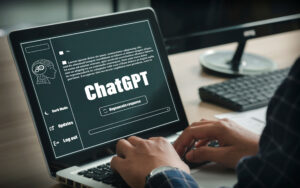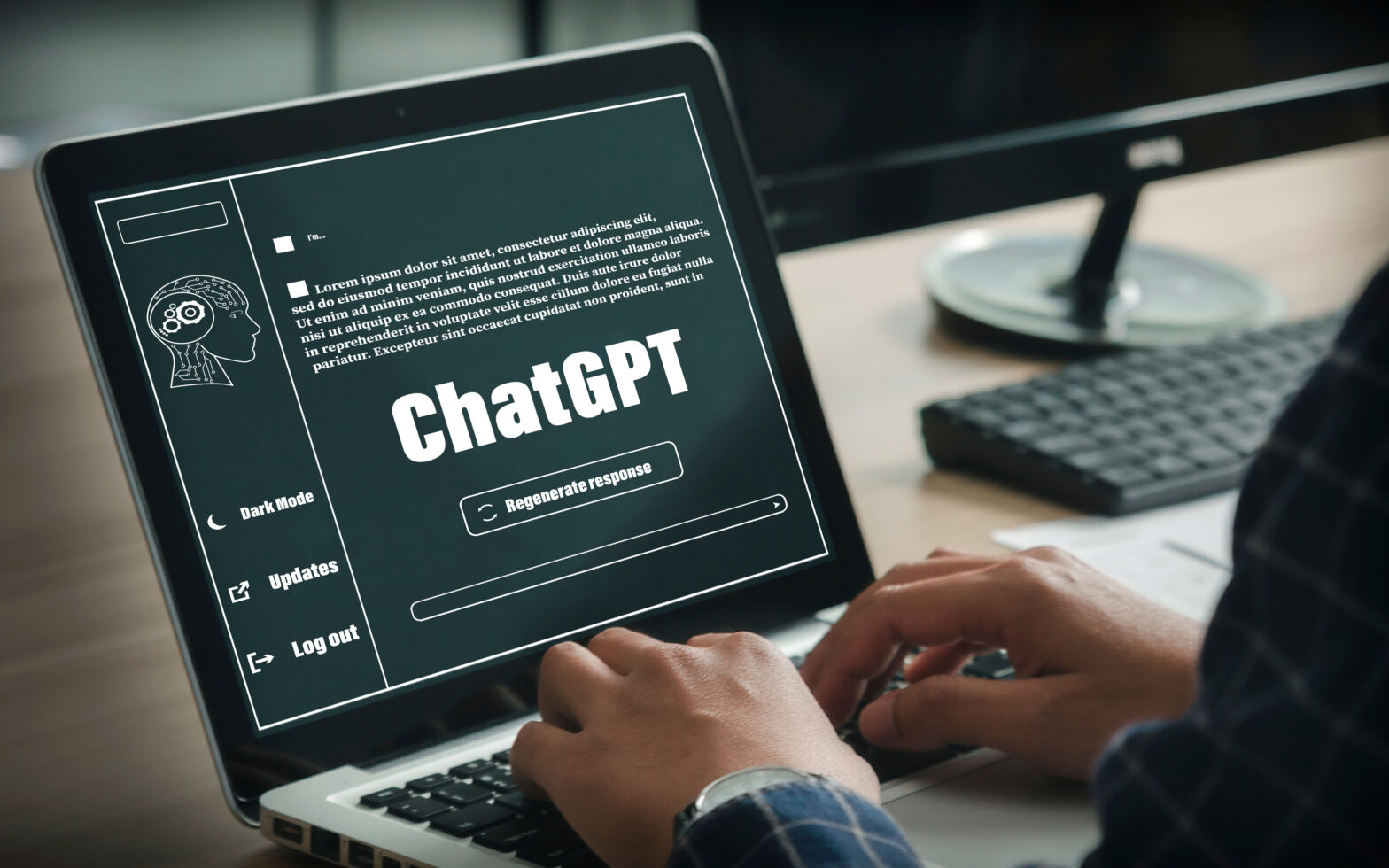I was thrilled when my school announced its new 1-to-1 technology program in my first year of teaching, a decade ago. This announcement meant that each of our students would now have a school-issued laptop in the classroom. Not only was it a welcome transition from traditional paper-based learning, but it also meant that I would be relieved from my daily tussles with the copy machine. Unfortunately, my excitement was short-lived.
At our first faculty meeting after the email announcement, the discussion proved singularly perfunctory and technical in nature. Our principal focused on the logistics of distribution and firewall restrictions, but 45 minutes into the meeting, he had yet to explain our plan for teaching students to use their new devices effectively, appropriately, and ethically.
I held back for as long as I could, but eventually I raised my hand and asked, “How will we teach our middle schoolers to use these devices appropriately?” To my surprise, my principal was dismissive, glibly replying, “Oh, the kids will be fine. In fact, they’ll be the ones to teach us what to do.” I was left stunned. But, the truth is, I shouldn’t have been. This sentiment is an unfortunately pervasive one.

How are Schools Keeping Up with Digital Literacy?
According to Albena Spasova, CEE Multi-Country Education Lead at Microsoft, “Students today don‘t need to learn how to use technology; they’re already using technology to learn.” Psychologist Dr. Jean Twenge similarly notes that “Generation Z is not just comfortable with technology, they are experts in it, having been born into a world where screens are as much a part of their lives as breathing.”
My principal’s perspective wasn’t extreme. In fact, his thinking was mainstream and conventional. It was my question that was radical. But, this notion that our Generation Z and Generation Alpha students have some inborn propensity for how to use technology is a hazardous fallacy with real consequences.
The Fallacy of Digital Natives
The term “digital native” was first introduced by Marc Prensky in 2001. The term refers to individuals who were born and raised in the digital age, and are therefore “naturally comfortable with technology.” Despite the popularization of the term, its veracity has been widely debated and summarily debunked. As Paul Kirschner says, “Students are not digital natives. Students are digital consumers.” Nevertheless, this notion that our students possess a natural savvy and proficiency with digital tools continues to have serious implications for schools and students.
An MIT study conducted two years ago found that “many schools are no longer teaching typing because they figure students already are proficient at using keyboards.” As a result, the study concluded that the average typing speed among secondary students has decreased in the past 20 years.
But what’s even more concerning than typing speeds is how this label of “digital natives” is being used as a reason to overlook the teaching of critical digital literacy skills, including search engine literacy, evaluating online resources, and the nature of online research. Given that a staggering 94% of students use Google as their primary technology, it’s imperative that we scrutinize the combustibility of when the digital native myth interacts with two words that have changed education forever: “Google it.”
Digital Literacy for a Post-Google World: Beyond “Google It”
Teachers today are increasingly concerned about their students’ approach to research because they believe that “research,” in the minds of their students, has become synonymous with “Googling.” This feeling was captured and corroborated by a study conducted by Pew Research Center. The study found that 99% of teachers surveyed agreed that their students’ first research resource is Google. 99%! However, despite this overwhelming reliance on search engines, only 5% of teachers surveyed believe that all or almost all of the information found using these tools is accurate or trustworthy.
And yet, despite this disconnect, only 35% of teachers allocate class time to help students understand how search engines work and how search results are generated and ranked. How could it be that so many teachers see a problem but so few are doing anything about it? Well, it comes back to the digital native myth.
Several studies have shown that teachers often believe that their students have a greater knowledge and understanding of technology than they do. This can lead to feelings of inadequacy and insecurity when it comes to incorporating technology into their teaching practices. For example, a study published in the Journal of Research on Technology in Education found that many teachers feel that their students are “digital natives,” and therefore have a natural affinity for technology that they themselves lack.
Of course, such feelings would be a non-issue if students truly understood how to use Google. Unfortunately, we know that this is not the case.
Study after study has found that students have a distinct lack of savvy and instinct when it comes to Google. A study published in the Journal of Educational Technology Development and Exchange in 2014 found that while 92% of students use Google as a research tool, only 8% of students use advanced search features such as quotation marks, site: search, and file type searches. Such an unsophisticated approach can easily result in sub-optimal search results, leaving students to be easy targets for sources and search results that have been heavily manipulated.
Do Students Really Know What is A Credible Source?
Google utilizes intricate algorithms to determine its search results, but these algorithms are susceptible to manipulation through various factors such as keyword optimization and advertising. The consequence of this is that students, lacking a well-practiced and well-informed approach to their online searches, may fall prey to search rankings that have been strategically manipulated by Search Engine Optimization (SEO) farms. This is particularly concerning given the findings of a recent study conducted by the American Association of School Librarians, which found that students often rely on the first few search results without considering the relevance or credibility of the information. Couple this finding with a study from Stanford University that found that 82% of middle schoolers couldn’t distinguish between “sponsored content” and a real news story on Google. What this tells us is that students are accessing information that is not only subpar, but is also inherently biased…and they don’t even know it.
While Google can be a useful tool for conducting research, the presence of SEO farms, coupled with students’ limited expertise, has resulted in a Google search experience that it’s kind of like if Consumer Reports was hijacked by business owners writing glowing reviews for their own products.
In the absence of education, there is a pressing need for a reliable source of information on the internet. However, such a resource does not currently exist. Or it didn’t until November 30, 2022.
“ChatGPT It” – A Digital Literacy Strategy for A Better Learner Experience
It’s my belief that the shift from “Google it” to “ChatGPT it” could be the key to providing students with the accurate and reliable information they need to succeed in our classrooms and more generally in today’s digital age.
While both search engines and AI tools have their advantages and disadvantages, ChatGPT offers several unique benefits that make it a more suitable alternative for students. Firstly, ChatGPT provides a personalized and conversational experience, allowing students to ask follow-up questions and receive real-time clarifications, making it easier to understand complex concepts. Additionally, as ChatGPT has been trained on a diverse range of texts, it is able to provide more comprehensive and in-depth answers, including background information and context. In contrast, traditional search engines, such as Google, are best suited for quick and specific searches, but may not always provide a complete answer to a question. A Google search can really only generate a list of web pages, many of which will not match the nuance and specificity of the question. With this in mind, it raises the question of whether ChatGPT should be the default resource for students seeking information.
Let’s take a look at a handful of examples and see if you agree:
- A student could ask ChatGPT “What is the difference between speed and velocity?” ChatGPT can provide a clear and grade-level appropriate explanation complete with examples and follow-up questions. Google can only provide a list of web pages, many of which will be too advanced.
- A student could ask ChatGPT “What are the similarities and differences between photosynthesis and cellular respiration?” ChatGPT can provide a detailed comparison. Google can provide a list of web pages that describe the two processes, but may not necessarily compare the two.
- A student could ask ChatGPT “Can you provide a real-world example of the Pythagorean theorem?” ChatGPT can provide specific examples and explain how the theorem is applied. Google can share web pages that mention the theorem, but do not necessarily include real-world examples.
- A student could ask ChatGPT “What are the literary devices used in Shakespeare’s Sonnet 18?” ChatGPT can provide a detailed analysis of the literary devices used in the sonnet, such as metaphor, imagery, and rhyme scheme. Google can provide a list of web pages that mention literary devices in the sonnet, but may not necessarily provide a comprehensive analysis.
- A student could ask ChatGPT “What are the key events and figures in the French Revolution?” ChatGPT can provide a chronological overview of the key events and figures, such as the Storming of the Bastille and Napoleon Bonaparte. Google can provide a list of web pages that mention events and figures in the French Revolution, but may not necessarily provide a clear and organized overview.
Getting Started: Using ChatGPT as a Digital Literacy Strategy
Digital Literacy and ChatGPT
Of course, ChatGPT isn’t some panacea. Students still need to learn how to evaluate the credibility of the information that it churns out. In this sense, ChatGPT should be seen as a valuable resource, but not a substitute for developing critical thinking and digital literacy skills. And, because we know that students are not digital natives, how do we teach students to do this? It starts with corroboration.
Corroboration is a valuable skill in research that involves seeking multiple sources of information to support or validate a claim. This is an important step in evaluating the credibility and accuracy of information. To use the skill of corroboration in combination with the CRAAP test – an evaluation method to examine the reliability of information – students can follow the steps below:
- Start with ChatGPT: Begin by asking ChatGPT a question or seeking information on a particular topic. This will provide a starting point for further research.
- Work laterally across tabs: After receiving information from ChatGPT, students should then open multiple tabs and look for additional sources of information on the same topic. This can include academic journals, news articles, government websites, and other credible sources.
- Compare information: Once students have collected information from multiple sources, they should compare the information they received from ChatGPT with the information they have found in other sources. They should look for consistency or discrepancies in the information, and consider whether the information supports or contradicts each other.
- Use the CRAAP test: Assuming students have found consistency, the next step is to utilize the CRAAP test (Currency, Relevance, Authority, Accuracy, Purpose) as a tool to evaluate the credibility and accuracy of the information they have found. They should use the test to assess the sources they have found to ensure that these points of consistency are coming from reliable sources.
By using the skill of corroboration and the CRAAP test, students can gain a better understanding of the accuracy and credibility of the information they have found and make informed decisions about the information they choose to use in their research.
Google has undoubtedly transformed the landscape of education, however, its influence has been imposed on our classrooms without much consideration for alternative solutions. Now, with the advent of advanced AI technologies such as ChatGPT, we are presented with an opportunity to take control of the technology that is being used in our classrooms. Given the advantages of ChatGPT, is it still justifiable to use Google in the classroom? The future of education is not set in stone and by taking control of the technology we use in our classrooms, we have the power to shape it for the better.


